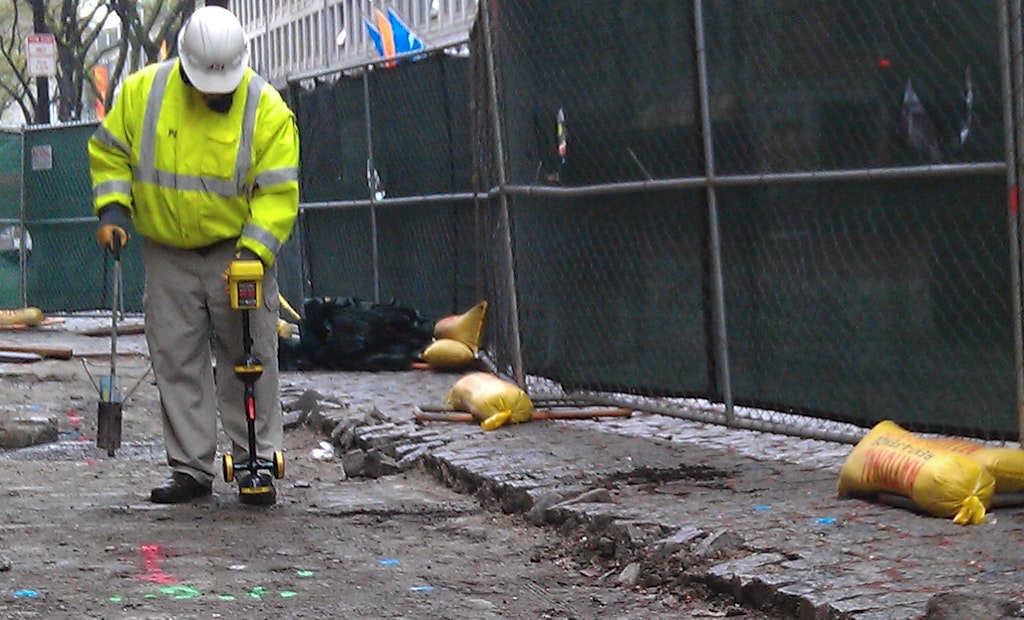Interested in Location/Detection?
Get Location/Detection articles, news and videos right in your inbox! Sign up now.
Location/Detection + Get AlertsWith some machines, a consistent regimen of preventive maintenance is critical. Oil needs to be changed out and components need to be greased or you could be in store for an equipment breakdown out in the field. Electromagnetic locating equipment is no different.
While there may not be many wearable components on locating equipment, it doesn’t mean maintenance can be neglected. Here are some tips to help keep your locating tools in good working order:
Be mindful about proper storage
An easy first step to take to keep locating equipment in good shape is paying close attention to how you’re storing it when it’s not in use. The manufacturer likely provided some sort of hard case for storage purposes, so make use of it.
It’s also a good idea to remove the batteries from the unit when it’s not being used. You probably can recall a time when you’ve gone back to something you had stored away and noticed the batteries had leaked. That is not a fault with the product itself and is something that can be easily prevented.
However, if you use your locating equipment every day, you may not have to worry as much about a battery issue: Dead batteries leak acid; good batteries don’t. If you forget to turn off your equipment, you’ll eventually run the batteries down. If you’re using it every day, you’ll immediately notice this and it may not be an issue. But if you’re using it, say, once a week, then a dead battery could be sitting in the unit and start leaking acid. Before you know it, the unit’s damaged.
Depending on the manufacturer, there may be software in the equipment that shuts it down when it’s not in use, which can help with this potential battery issue. But some manufacturers select not to do that and the equipment doesn’t shut down unless you do it, so it’s worth keeping all of this in mind.
Don’t be careless in the field
Be aware of situations in which the equipment could be susceptible to accidental damage. It’s obvious advice, but a common cause of locator damage is from it simply getting run over. Maybe you lay the equipment down where you’re working, lean it up against a truck or lay it on the tailgate; then someone hops in the truck and leaves. Next thing you know, the locator falls off the truck or gets run over.
For the most part, the receiver will stay near the user, so a little common sense can go a long way toward keeping it safe. For the transmitter, consider placing it in such a way that protects it or makes its location clearly visible. For example, if it’s a direct-connect situation where the transmitter is next to the telephone pole or a utility box, think about if it’s positioned in a way that would open it up to possible damage by someone not seeing it. Put it really close to the telephone pole or utility box to protect it or, better yet, mark it with an orange traffic cone.
Know your environment limitations
Locators aren’t your everyday electronics. Manufacturers build them to withstand rugged working conditions. Still, it’s important to handle the equipment with care and know where to draw the line. Misuse is more common than equipment failure.
Some locators are better than others, but most manufacturers have built their equipment to withstand the elements — snow, rain and mist. However, water resistance does not mean waterproof. There’s a point where it’s probably raining too hard. If you’re comfortable working in it, you’re probably fine. If it’s a downpour where you don’t even want to be outside, it will probably affect the equipment too.
Upgrade software if necessary
Software is manufacturer-dependent. In some cases, an upgrade may be in order to keep your locator functioning properly. In other cases, you may only have to upgrade if you’re looking for some added features. A locator is not like a computer that needs consistent updates.
While software issues are not common, it doesn’t mean they couldn’t be the root of a problem. If you’re having an issue with your locator, confirm you have the manufacturer’s up-to-date software before sending it in for repair.
Establish a test point to confirm equipment problems
There can be several potential causes if you’re having problems with a locator, none of them pertaining to the equipment’s ability to properly function. For example, there could be interference on the job site.
How can you be 100% sure it’s the equipment that is at fault and not another factor? Be sure to regularly test your equipment on a known pipe or line so that if a problem arises in the field, you can immediately rule out equipment failure. Find a utility at your home base, do a locate on it, get a depth estimate and expose it. Then confirm that the locate was correct and the depth was correct. If that’s all correct, you know your locator is working properly.






